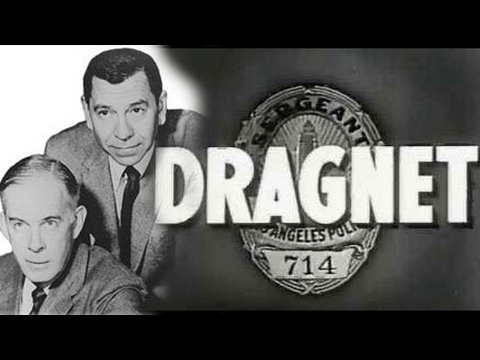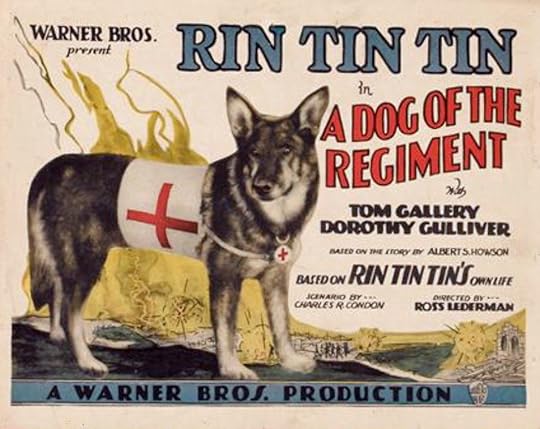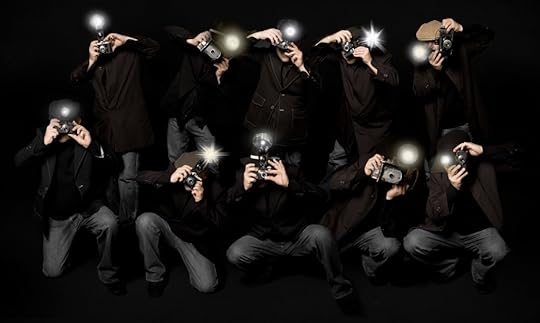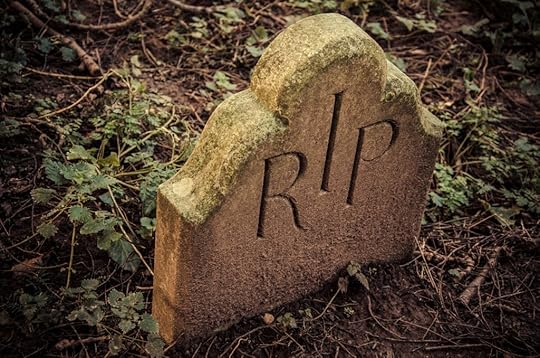Bathroom Readers' Institute's Blog, page 65
March 6, 2017
What’s a “Dragnet” Anyway?
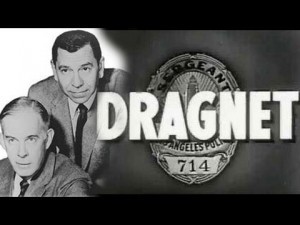
Some TV show titles make perfect sense—Friends is about some friends, and The Sopranos is about a family called the Sopranos, for example. Other titles are a bit harder to crack—like these.
Dragnet
Procedurals are a big part of TV today—formulaic crime shows in which police detectives dutifully go through all the steps they’re supposed to go through to catch a criminal. In other words, they’re “by the book.” The form was created by Jack Webb in the 1950s with his show Dragnet. Webb was devoted to making as realistic a cop show as possible, even soliciting stories from real police around the country. It makes sense then that he’d name his show after a kind of obtuse police term—a dragnet refers to the overall, coordinated system of tools police use to nab a criminal, which can include everything from door-to-door searches to DNA testing.
Halt and Catch Fire
AMC’s period drama is set in Texas in the 1980s in the early, explosive years of the personal computer industry. The title is a computer engineering term, generally used by its abbreviation “HCF.” It refers to what happens to when a computer’s central processor detects a bug—it shuts down. Or, in more dramatic terms, it “halts and catches fire.”
Orphan Black
Tatiana Maslany won an Emmy Award for her performance on this science-fiction series: she plays a half dozen or so clones, all with different personalities. The series began with the main character, Sarah, realizing that she was a clone created by a nefarious corporation—which categorized her as an “orphan” when she escaped. Sarah went into the greater society at large, or “in the black.” Orphan + in the black = Orphan Black.
Bonanza
The classic Western took place in and around Cartwright family’s Ponderosa Ranch just after the Gold Rush in the western U.S. While reruns of the show were titled Ponderosa, the show was originally named Bonanza, which means a major discovery of ore…or gold.
The post What’s a “Dragnet” Anyway? appeared first on Trivia Books and Facts | Uncle John's Bathroom Reader.
March 3, 2017
The Legend of “The Legend of Zelda”

Today is a huge day in the world of video games. Nintendo releases its latest system the Switch, along with a new game in the Legend of Zelda series, Breath of the Wild, an incredibly ambitious game that took developers years to make. Here are some more fun facts about the world of Zelda.
Game creator Shigeru Miyamoto wanted the princess character central to the game to be “mysterious” and “unattainable.” So, he took inspiration from Jazz Age author Zelda Fitzgerald…and went ahead and named the princess Zelda as well. (And Robin Williams was such a big fan of The Legend of Zelda that he named his daughter Zelda.)
Miyamoto was inspired to create the game of magical woodlands and spooky dungeons not from fantasy fiction like Lord of the Rings, but his own childhood adventures. He grew up in a small town outside Kyoto, Japan, and he’d spend his time wandering around the forests. One time he came across a deep hole in the ground, and he had a lantern with him and started exploring…and found a cave system.
Other games in the series have a bit more surprising inspiration. The 1993 game Link’s Awakening for the Nintendo Game Boy was developed because of another early 1990s pop culture sensation: Twin Peaks, David Lynch’s ABC series about a murder in a tiny and surreal Washington town. In Link’s Awakening, Link meets several very strange characters who all live in a bizarre little town. The game’s creator, Takashi Tezuka admits that “at the time, Twin Peaks was rather popular. The drama was all about a small number of characters in a small town.”
Link, the questing warrior at the center of the Zelda adventures has been left-handed for most of his 30-year history in games. That changed when Nintendo started making games for the Wii console. Because that system is powered by users holding a wireless, motion-sensing remote joystick in their hand, Link became right-handed so his onscreen movements would match those of the players—of whom are overwhelmingly right handed.
A Legend of Zelda game was one of the first ever online-only video games…way back in 1995. Nintendo users in Japan could buy a device called a Satellaview that allowed them to connect to the Internet (via a satellite network) and play games. Among the first offered was BS The Legend of Zelda. (Don’t worry—the “BS” means “broadcast satellite.”) Unlike today’s world in which games can be played online whenever players like, BS The Legend of Zelda was available for a certain time each day, like a TV show, and was only playable at that time. (This system of game delivery ultimately flopped.)
The post The Legend of “The Legend of Zelda” appeared first on Trivia Books and Facts | Uncle John's Bathroom Reader.
February 28, 2017
Where’d You Get That Coat?
As winter winds down, here’s a look at how a few unique coats and jackets got their names.
Blazer
Also known as a sportjacket, the blazer doesn’t seem to be something one would associate with burning flames, or a “blaze.” They’re actually quite the opposite—tasteful, sedate, and usually found in subdued colors like navy blue or tan. But it wasn’t always that way. In 1825, the Lady Margaret Boat Club was founded at Cambridge University. This women’s competitive rowing squad sought to distinguish themselves from the older, storied men’s team, whose members wore conservative striped jackets. The Lady Margaret Boat Club’s members wore bright scarlet sporting jackets—which quickly earned the nickname “blazer.”
Pea Coat
The waist-length (or longer) coat, generally made out of wool, keeps its wearer quite warm in the winter. A simple, wide-labeled, double-breasted design has helped keep the pea coat in style for decades—they first gained traction in the U.S. in the 1700s, believe it or not. But they’re rarely “pea-colored,” or have anything else to do with the little green vegetables, so where do they get their name? There are two theories. One is that it’s an English-ified version of a Dutch word, pijakker, pronounced “pea jacket.” Pij is the type of twill-like fabric used when the coats were first made. The other is that soldiers in Europe and the Americas wore those same kinds of coats but called the fabric “pilot cloth,” because the fabric kept even pilots flying in frigid conditions warm.
Windbreaker
Obviously, these lightweight jackets, often made from a shiny, non-porous fabric, are worn to protect from the wind. But it’s actually a registered trademark—the John Rissman Company of Chicago, Illinois, debuted a line of snug gabardine jackets in the 1940s and called them “Windbreakers.” (Around the world, the same styles of jackets are called windcheaters and windjammers.)
The post appeared first on Trivia Books and Facts | Uncle John's Bathroom Reader.
5 Unique Things About This Year’s Academy Awards

Other than how the Oscar for Best Picture was handed out, we mean.
Best Director winner Damien Chazelle is the youngest ever recipient of the award. The 32-year-old won for La La Land, which is only his third feature film. He beats the previous record holder, Norman Taurog, who won for directing Skippy way back at the 4th annual Academy Awards in 1931.
Moonlight won Best Picture, marking the first time that a film with an entirely African-American cast won the top prize.
Moonlight has picked up some Best Original Screenplay awards in the past few months, but the Academy of Motion Picture Arts and Sciences ruled that it was based on a previous work, Tarell Albin McCarney’s play In Moonlight Black Boys Look Blue—even though the play has never been published or publicly presented.
Also nominated in the category was August Wilson for Fences, based on his own Pulitzer Prize-winning play. Wilson died in 2005, shortly after completing a screen version of the play. While fellow Pulitzer Prize-winning playwright Tony Kushner quietly did some rewrites, only Wilson got the Oscar nominations.
It was a very good night for the cast of The Help. That 1960s period piece didn’t win any Oscars this year…because it was released in 2011. But it starred this year’s Best Actress winner Emma Stone, this year’s Best Supporting Actress winner Viola Davis, and another Supporting Actress nominee, Octavia Spencer. (She won that award…for The Help.)
It’s the first time that online streaming networks won Oscars. While Netflix and Amazon can compete for Emmys (and have won them) for excellence in TV, if they produce a film and release it to theaters, they can win movie awards. Netflix’s “The White Helmets” won for Best Documentary Short, while Amazon took home prizes for Manchester by the Sea (Best Original Screenplay and Best Actor) and The Salesman (Best Foreign Language Film).
Meryl Streep didn’t take home an Oscar for Best Actress on the back of her record 20th acting nomination for Florence Foster Jenkins. It’s no big deal, really—she’s won three times before. But sound mixer Kevin O’Connell finally broke his losing streak. He won an Oscar for his sound work on Hacksaw Ridge—his first Academy Award in 21 nominations.
The post 5 Unique Things About This Year’s Academy Awards appeared first on Trivia Books and Facts | Uncle John's Bathroom Reader.
February 27, 2017
Weird Official Rules of Baseball

It seems like only yesterday that the Chicago Cubs won the World Series, but it’s already spring training time again. The Major League Baseball season is just around the corner, so it’s time to brush up on these incredibly obscure but very real baseball rules.
A team’s manager or coach can call a break in the game to go talk to their pitcher. The meeting is considered over once the coach leaves the 18-foot radius surrounding the pitcher’s plate. If he heads back to the mound, say, if he forgot to discuss something, that’s in violation of the rules and the coach has to replace the pitcher.
If there are runners on base, and a ball for whatever reason gets lodged in the umpire’s face mask, good news…for the runners. They all get to advance by one base.
The “ground rule double” is a relatively common occurrence in baseball. If a batter hits a ball, and it bounces in the outfield and then into the stands and out of play, he gets to take two bases, or a default double. Less common is the ground rule triple. If a player merely attempts to catch a hit ball with their cap (or mask, in the case of the catcher), the batter automatically gets to take third base.
While it seems like a baseball game can stretch on forever, especially as a pitcher debates his next pitch, there’s actually a time limit. It’s almost never enforced, but a pitcher technically has 12 seconds to deliver a pitch (if the bases are empty).
Players on a team’s active roster are not allowed to sit in the grandstands.
If a runner on third base tries to steal home—and gets hit by a pitched ball while doing so—every other runner gets to move up a base.
Uniformed stadium security guards stationed on the field are considered to be “in play” if struck by a pitch. In other words, if they get hit, it’s not a foul ball—players have to pick up and throw a ball if it just hit a security guard, for example.
One of the main differences between the American League and the National League is the AL’s use of the designated hitter. In lieu of a pitcher taking their turn at bat, each team gets a guy who just hits and doesn’t take the field in the team’s defensive half of each inning. The AL is very serious about keeping their hitters designated hitters—they are forbidden from hanging out in a team’s bullpen.
The post Weird Official Rules of Baseball appeared first on Trivia Books and Facts | Uncle John's Bathroom Reader.
February 24, 2017
The Strangest Oscar Nominations of All Time
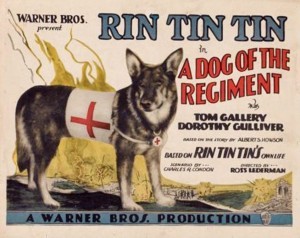
Each year, the Academy Awards recognize the finest work in movies. Sometimes the Academy’s voters make some really odd choices.
Rin Tin Tin
The biggest movie star of 1927: Rin Tin Tin—a German shepherd. He was a very good boy that year, starring in four box office hits. Later that year, the first Academy Awards were presented, and when all of the votes were counted, the winner of Best Actor (for his body of work for the year) was Rin Tin Tin. But the Academy wanted their newly created awards to be taken seriously, so Rin Tin Tin was declared ineligible to receive the prize. The Oscar isbtead went to the guy who got the next most votes: Emil Jannings, for The Way of All Flesh and The Last Command.
William Shakespeare
William Shakespeare died in 1616. More than 350 years later, the Bard got his first and only Academy Award nomination, for Best Adapted Screenplay. Sharing that nod was Kenneth Branagh, who brought Shakespeare’s Hamlet to the big screen. But Branagh didn’t do much adapting at all. His 1996 version of Hamlet was notable for being the first Hamlet film that didn’t make a single cut to the original play—every scene and every line of dialogue was intact.
Avatar’s Cinematography
Mauro Fiore won Best Cinematography at the 2010 Academy Awards for his work on Avatar. While that movie is certainly visually stunning, what Fiore did isn’t exactly traditional cinematography. The planet of Pandora and the blue-skinned Na’vi are almost entirely computer-generated—which means Fiore somehow won for his camera work on what’s more or less a cartoon.
Woody Woodpecker Song
“Heh-heh-heh-HEH-heh.” That’s “The Woody Woodpecker Song.” The earworm of a cartoon theme song is the first and only time a tune from a short cartoon has earned a nomination for Best Original Song. It debuted in the 1948 Woody Woodpecker short “Wet Blanket Policy.”
1996 Best Picture Nominees
The five nominees for Best Picture at the 1996 Academy Awards run the gamut from expected to highly unlikely. Balancing out the usual Oscar-nominated fare of historical dramas (Apollo 13), epics (Braveheart), and literary adaptations (Sense and Sensibility), are Il Postino and Babe. The former, a quiet Italian film about a lovelorn postman (played by Massimo Troisi, who died just after filming completed) is one of only a handful of foreign language films to be nominated for Best Picture. The latter, Babe, is a kids movie about a talking pig, whose lips move via the magic of special effects.
The post The Strangest Oscar Nominations of All Time appeared first on Trivia Books and Facts | Uncle John's Bathroom Reader.
February 23, 2017
Caffeine Facts and Trivia

What’s America’s favorite drug? You guessed it—caffeine. We use more caffeine than all other drugs—legal or illegal—combined. Want to know what the stuff is doing to you? Here’s a quick overview.
Background
If you start the day with a strong cup of coffee or tea, you’re not alone. Americans ingest the caffeine equivalent of 530 million cups of coffee every day. Caffeine is the world’s most popular mood-altering drug. It’s also one of the oldest: according to archaeologists, man has been brewing beverages from caffeine-based plants since the Stone Age.
How it Picks You Up
Caffeine doesn’t keep you awake by supplying extra energy; rather, it fools your body into thinking it isn’t tired.
When your brain is tired and wants to slow down, it releases a chemical called adenosine.
Adenosine travels to special cells called receptors, where it goes to work counteracting the chemicals that stimulate your brain.
Caffeine mimics adenosine, so it can “plug up” your receptors and prevent adenosine from getting through. Result: Your brain never gets the signal to slow down, and keeps building up stimulants.
Java Junkies
After a while, your brain figures out what’s going on, and increases the number of receptor cells so it has enough for both caffeine and adenosine.
When that happens, caffeine can’t keep you awake anymore…unless you increase the amount you drink so it can “plug up” the new receptor cells as well.
This whole process only takes about a week. In that time, you essentially become a caffeine addict. Your brain is literally restructuring itself to run on caffeine; take the caffeine away and your brain has too many receptor cells to operate properly.
If you quit ingesting caffeine “cold turkey,” your brain begins to reduce the number of receptors right away. But the process takes about two weeks, and during that time your body sends out mild “distress signals” in the form of headaches, lethargy, fatigue, muscle pain, nausea, and sometimes even stiffness and flu-like symptoms. As a result, most doctors recommend cutting out caffeine gradually.
Caffeine’s Effects
Good: Caffeine has been scientifically proven to temporarily increase alertness, comprehension, memory, reflexes, and even the rate of learning. It also helps increase clarity of thought.
Bad: Too much caffeine can cause hand tremors, loss of coordination or appetite, insomnia, and in extreme cases, trembling, nausea, heart palpitations, and diarrhea.
Widely varying the amount of caffeine you ingest can put a strain on your liver, pancreas, heart, and nervous system. And if you’re prone to ulcers, caffeine can make your situation worse.
If you manage to consume the equivalent of 70-100 cups of coffee in one sitting, you’ll experience convulsions, and may even die.
Caffeine Facts
The average American drinks 210 milligrams of caffeine a day. That’s equal to 2-3 cups of coffee, depending on how strong it is.
How you make your coffee has a lot to do with how much caffeine you get. Instant coffee contains 65 milligrams of caffeine per serving; coffee brewed in a percolator has 80 milligrams; and coffee made using the “drip method” has 155 milligrams.
Top four sources of caffeine in the American diet: coffee, soft drinks, tea, and chocolate, in that order. The average American gets 75% of their caffeine from coffee. Other sources include over-the- counter painkillers, appetite suppressants, cold remedies, and some prescription drugs.
What happens to the caffeine that’s removed from decaf coffee? Most of it is sold to soda companies and put into soft drinks. (Cola contains some caffeine naturally, but they like to add even more.)
Do you drink more caffeine than your kids do? If you correct for body weight, probably not. Pound for pound, kids often get as much caffeine from chocolate and soft drinks as their parents get from coffee, tea, and other sources.
The post Caffeine Facts and Trivia appeared first on Trivia Books and Facts | Uncle John's Bathroom Reader.
February 21, 2017
Celebrity Gossip
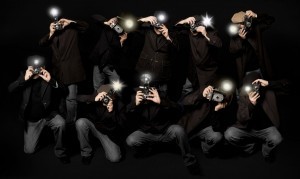
Here’s the latest edition of the BRI’s cheesy tabloid section—a bunch of gossip about famous people.
George Clooney
When Clooney was in middle school, he developed a medical condition called Bell’s palsy, which partially paralyzed his face for nearly a year. Clooney’s left eye stayed closed and he had trouble eating and drinking. This condition led to a lot of taunting in school, including the nickname “Frankenstein.”
Ice-T
In 1984 Ice-T had just released the rap single “Killers,” one of the first “gangsta rap” records. At the time, he was also a member of the notorious gang the Crips, as well as an occasional pimp and jewel thief. Somehow Ice-T also got the job of ghostwriting rap lyrics for Mr. T’s motivational video for kids, Be Somebody…or Be Somebody’s Fool. Sample lyrics from the song “Treat Your Mother Right”: “‘M’ is for the moan and the miserable groan / From the pain that she felt when I was born.”
Elvis Presley
Could you imagine Elvis—with a British accent—saying, “I fart in your general direction”? According to former girlfriend Linda Thompson, the King was a huge fan of the British comedy troupe Monty Python. “He’d be doing all the voices,” she said, “which is mind-boggling. He’d even do the ladies’ voices.”
Coretta Scott King
Walter and Betty Roberts, a young couple in Atlanta, Georgia, gave drama lessons to the children of Coretta Scott and Martin Luther King Jr. in the 1960s. Even though the Roberts family was white, they welcomed black children into their home during those racially charged times. In October 1967, upon hearing the news that Betty Roberts had to go to the hospital to deliver her third child, Mrs. King paid all of the family’s hospital bills as a gesture of thanks. That child: Julia Roberts.
DENNIS HOPPER
In the mid-1960s, the up-and-coming actor bought a painting called Sinking Sun by pop artist Roy Lichtenstein—which he then lost to his first wife in their 1969 divorce. What did it cost him? “I paid $1,100 for Sinking Sun,” he explained in an interview. “My ex-wife sold it for $3,000, thinking she’d made a good deal.” After changing hands one more time, the painting was auctioned off in 2006 for $15,780,000.
Quentin Tarantino
“I’ve always thought that I might have been Shakespeare in another life,” Tarantino told GQ magazine. “I don’t really believe that 100 percent, and I don’t really care about Shakespeare, but people are constantly bringing up all of these qualities in my work that mirror Shakespearean tragedies. I remember in the case of Reservoir Dogs, writing this scene where the undercover cop is teaching Tim Roth how to be an undercover cop. When Harvey Keitel read it, he thought I had just taken Hamlet’s speech to the players and broke it down into modern words.” Here’s the spooky part: “I’d never read Hamlet!”
Hilary Swank
The two-time Oscar winner was studying a script in a busy Los Angeles bakery when she noticed an older woman—who was obviously in a hurry—asking for help at the counter. All the salespeople were busy with other customers, so Swank got up, walked behind the counter, and put together the woman’s order. (Swank was a regular there, so the staff welcomed her help.) Later that week, Swank was pulled over for speeding on the Pacific Coast Highway. The cop let her off with just a warning. Why? He had been in the bakery that day and witnessed Swank’s good deed. And the woman she helped, he told her, was actually a high-ranking judge in Malibu.
The post Celebrity Gossip appeared first on Trivia Books and Facts | Uncle John's Bathroom Reader.
Quiet on the Set (Because the Star is Sleeping)

We’ve all fallen asleep while watching a movie or a TV show—but these actors managed to doze off while they were filming a movie or a TV show.
Norm Macdonald
In 1995, the Saturday Night Live star acted in one of his first movies, Billy Madison, with fellow SNL star Adam Sandler. The movie is about a wealthy slacker (Sandler) who decides to go back to school, but until then he sits around a pool all day with his friends, getting drunk. Macdonald played one of those friends. While filming around the pool one day, Sandler says he delivered a line to Macdonald…and Macdonald just sat there and said nothing. He was wearing sunglasses, so it took Sandler a moment to realize that he was asleep. Macdonald later said he knew why he dozed off: His character was supposed to be drunk, and so Macdonald had had too much to drink as well.
James Phelps
Don’t read this if you haven’t finished Harry Potter and the Deathly Hallows, book or movies. James Phelps played Fred Weasley, brother of Harry Potter’s best friend, Ron Weasley, since the beginning of the movie series. In Harry Potter and the Deathly Hallows Part 2, the last Potter film, Fred dies. It’s a pivotal, extremely sad scene—Phelps as Fred lays there with his eyes closed while his co-stars cry. But Phelps didn’t have to do much, and he had to keep his eyes closed tight, and so…he fell asleep.
Robert De Niro
This ensemble film New Year’s Eve is made up of different episodes involving different people on New Year’s Eve. One of those pairings involved Oscar winners Hilary Swank and Robert De Niro. At one point, De Niro’s character is in a hospital bed, dying. Swank, playing De Niro’s daughter, was thrilled to work with De Niro and thought he was just acting really hard when they were filming a scene, when she noticed his eyes twitching in order to stay open and then closing. Swank later said that she was moved and felt a “connection” with De Niro as they filmed the powerful scene. Then, Swank says, De Niro suddenly jolted upright and said “Anyone got that coffee?” He was asleep, of course.
Joe Morton
Before he became a regular cast member on Scandal, Morton was doing a guest-star stint on the show while looking for other work. He was filming a pilot for a show called Proof in 2015 at the same time as he was doing Scandal, so he was flying back and forth between Vancouver (where Proof was being made) and Los Angeles (where Scandal is taped). Scandal accommodated him during this time by making his job a little easier—his character was in the hospital, unconscious, so he didn’t have any dialogue to worry about. Eyes closed, no lines to deliver, laying in a bed, exhausted from working too shows—Morton dozed off.
The post Quiet on the Set (Because the Star is Sleeping) appeared first on Trivia Books and Facts | Uncle John's Bathroom Reader.
February 20, 2017
Weird Ways Presidents Died

It’s President’s Day, a day to remember the contributions of American presidents of the past…and to also remember the strange circumstances in which a few of them passed away.
George Washington (1799)
After riding around his estate in cold weather, the first ex-president contracted pneumonia. Eighteenth century doctors did what they could for Washington, which at the time meant bloodletting…with leeches. It’s likely what actually killed Washington was an infection of the larynx, causing him to suffocate, but having too much blood drained out of him severely weakened his body’s ability to fight off infection.
John Quincy Adams (1848)
After the end of his one-term presidency, Adams returned to Congress, winning a seat in the House of Representatives. After loudly and emphatically voting “no!” on a resolution to honor veterans of the Mexican-American War (a conflict Adams had opposed), he collapsed. Two days later, Adams had died of the sudden cerebral hemorrhage.
William Henry Harrison (1841)
He gave such a long inaugural address—in freezing temperatures with no overcoat—that he caught a cold, then pneumonia. Then he died—one month into his term.
Zachary Taylor (1850)
One of Taylor’s proudest moments as president turned out to be one of his last. The Washington Monument was dedicated on Independence Day, 1850, and President Taylor attended the summertime event dressed in a black suit buttoned all the way up to the neck. Unsurprisingly, he got overheated, and he tried to cool down by drinking a ton of ice cold milk and then a bunch of cherries. It’s unclear exactly how milk and cherries killed Taylor: it was either the bacteria present in pre-pasteurization-era dairy products, or gastroenteritis brought on by the acidic cherries.
Dwight Eisenhower (1969)
About a month before the general and president died, he had undergone surgery to remove an intestinal blockage, even though his doctors were worried the surgery would weaken the 79-year-old’s heart. But if the blockage remained, he’d die of toxins building up in his bloodstream. The doctors were right: He died of coronary thrombosis—a disease of the heart.
The post Weird Ways Presidents Died appeared first on Trivia Books and Facts | Uncle John's Bathroom Reader.

